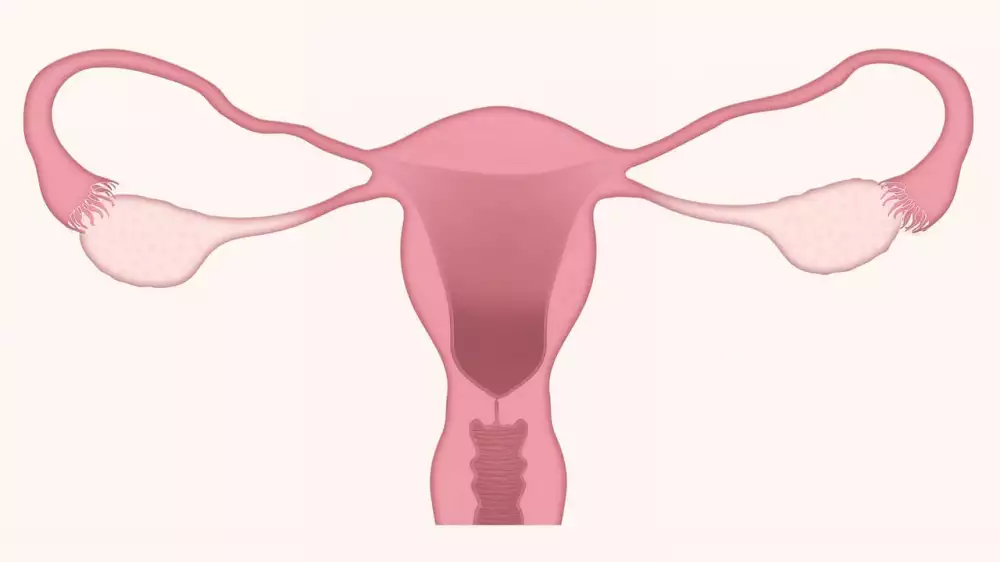A scarf: An overview of the different types and their importance for women's health

- Definitions of the vagina
- Vaginal Anatomy
- 1. The Outer Parts of the Vagina
- 2. The inner parts of the vagina
- Vaginal physiology
- 1. Hormonal regulation
- 2. Menstrual cycle
- 3. Lust and sexual activity
- Vaginal changes over the course of life
- 1. Puberty and vaginal development
- 2. Pregnancy and childbirth
- 3. Menopause and aging
- Vagina-related health problems
- 1. Infectious diseases of the vagina
- 2. Vaginal problems associated with hormonal imbalance
- 3. Vaginal problems associated with pregnancy and childbirth
- Vaginal Health Care
- 1. Hygiene habits
- 2. Regular preventive check-ups
- 3. Healthy lifestyle and nutrition
- Links and Resources
The penis is one of the most basic organs of the female reproductive system. This organ has many different types that vary in appearance, size and functions. In this article, we will discuss in detail the different types of vagina and their anatomical structure. It is important to remember that every woman is different and each vagina has its own specific characteristics. Although some types of vagina are common, there are also a number of rare types that might be relevant to some women. Therefore, this article will give you a comprehensive overview of the different types of vagina so that you can better understand the function of this important organ in the female body.
Definitions of the vagina
The vagina is an anatomical structure of the female reproductive system that serves as a conduit for the transmission of semen to the uterus and the exit of menstrual blood from the body. The vagina is located between the urethra and the anus and measures on average 7-10 cm in length. Its walls are covered with mucous membrane and are able to expand during sexual arousal. The vagina can be of different shapes and sizes in different women, which can affect comfort during sexual intercourse and the birthing process. There are also different types of vagina according to shape, such as a conical vagina, a heart-shaped vagina or a beet vagina. Each type of vagina has its own specifics and characteristics that can affect the sexual experience of both women and men.
Vaginal Anatomy
Vaginal anatomy is a field of medicine that deals with the structure and function of the female reproductive organ. The vagina is a tubular structure that connects the uterus to the external environment. It is mainly made up of smooth muscles and slit-like mucosa, a layer of cells on the inside of the vagina. These cells are capable of expanding and contracting, which allows the passage of the fetus during birth and also ensures the adhesion of sperm during intercourse.
Anatomically, vaginas can vary from woman to woman. They can be different lengths and widths, and have different slopes or curves. These differences can affect a woman's sexual experience and the effectiveness of contraception.
The labia can be further subdivided according to external appearance into two basic categories - large labia majora and smaller labia minora (labia majora et minora). Internally, there are further anatomical distinctions such as the upper part of the vagina (fornix), its ceilings or walls.
Knowledge of the anatomy of the vagina is important for gynecologists, obstetricians, and other professionals who deal with women's health. It can also be useful for any woman who wants to better understand her body and her sexual health.
1. The Outer Parts of the Vagina
The vagina is an important part of the female reproductive system. The outer part of the vagina consists of the vestibule, which is located between the labia majora. The vestibulum contains many anatomical structures, such as the vestibular glands that produce secretions to moisten the vagina or the entrance to the urethra. Between the vestibule and the anterior wall of the vagina is the clitoris, a sensitive organ similar to the penis that is used for sexual arousal. The labia majora are also an important part of the vagina, protecting the inner parts of the vagina from external influences and possible infections.
2. The inner parts of the vagina
The inner parts of the vagina are very important for the proper functioning of this organ. Key areas include the cervix, which separates the vagina from the uterus, and the lining of the vagina, which is covered with many layers of cells. In addition, there is also the vaginal vestibule, which is the entrance to the vagina, and the hymen, which is referred to as the hymen. These areas can be affected by various factors such as hormonal changes or infections, and their proper functioning is essential for maintaining a woman's health.
Vaginal physiology
Vaginal physiology is an essential part of the anatomical field that deals with the study of the structure and function of the vagina. Beginning at puberty, the vagina becomes a key part of the female reproductive system, providing a space for sexual intercourse and allowing the passage of menstrual blood from the uterus to the outside. On its surface is a layer of mucous membrane that produces mucus and provides natural moisture in the genital area. Acidity, or pH, is also an important factor in the physiology of the vagina, which maintains a stable microbial environment in the genital area. Violation of this balance can lead to infections and other health problems, so it is essential to maintain good hygiene and care for the health of the intimbere.
1. Hormonal regulation
Hormonal regulation plays an important role in the anatomy of the vagina. Estrogens are a key hormone for maintaining the healthy appearance and function of the vaginal mucosa. These hormones promote the production of vaginal secretions, maintain tissue elasticity and provide moisture in the vaginal area. With estrogen deficiency, various problems can occur such as dryness, itching and irritation of the vagina or decreased sexual desire. Hormonal imbalances can also be associated with certain menstrual cycle disorders and other health complications.
2. Menstrual cycle
The menstrual cycle is a biological process that takes place in a woman's body, preparing it for eventual pregnancy. This cycle lasts an average of 28 days, but can be longer or shorter in some women. The process begins on the first day of menstruation and ends on the last day before the next period. During this period, changes in hormonal levels occur, which affects the overall function of a woman's reproductive system.
The vaginal environment plays a key role in the menstrual cycle process. When an egg is released from the ovary and enters the fallopian tube, it travels towards the uterus and awaits fertilization by sperm. If fertilization does not occur, the lining of the uterus is shed and a new layer of mucosal tissue forms to prepare for another possible pregnancy.
For this reason, it is important to keep the vaginal pH at the correct level and to maintain genital hygiene throughout the menstrual cycle.3. Lust and sexual activity
The vagina is a very important part of the female reproductive system and plays a key role in sexual activity. Anatomically, the vagina consists of different layers of tissues such as muscular, mucosal and connective tissues. These tissues together form a flexible tube that allows the passage of the penis during intercourse. The sheath is incredibly elastic and can expand up to several times its original size to accommodate different penis sizes and shapes. This ensures maximum pleasure for both partners during sexual activity. The anatomy of the vagina is a complex subject and its proper function is essential for women's reproductive health.
Vaginal changes over the course of life
The vagina, as an organ of a woman's reproductive system, is subject to various changes during her lifetime. These changes may be physiological (age-related) or pathological. In early adolescence, the first changes occur in which the vagina lengthens and begins to produce mucus in order to retain moisture and allow sexual intercourse. During pregnancy, the vagina continues to change - the volume of tissue increases and becomes empathic (stretchable). After childbirth, there may be a complete or partial rupture of the tissues of the vagina and perineum (lower abdomen), which must be addressed surgically. With the onset of menopause, the body's estrogen levels decrease, resulting in vaginal atrophy, thinning of the vagina and reduced mucus secretion, and therefore impaired ability to retain moisture and protect against infection. These physiological changes can lead to discomfort and problems with sexual intercourse, which is why a range of treatment options are now available, including hormone replacement therapy and laser treatment.
1. Puberty and vaginal development
Puberty is a stage of adolescent development during which many changes occur in the body. One of these changes is the development of the vagina in girls. The vagina consists of several layers of tissue and is connected to the uterus. During puberty, these layers of tissue begin to develop and the vagina becomes capable of performing its reproductive function. There are several types of vagina, which differ in their anatomical structure. These types of vagina can be of different sizes, lengths and widths, which can have an impact on a woman's sexual intercourse and orgasm. Therefore, it is important for every woman to know her vaginal type and understand its anatomy to maintain a healthy vaginal environment.
2. Pregnancy and childbirth
.During pregnancy, many changes occur in a woman's body, including anatomical ones. One of the areas that are affected is the vagina. This is because during pregnancy, the vagina expands and changes its structure to better suit the new conditions.
During childbirth, the vagina then plays a key role in the passage of the baby out of the mother's body. However, not every vagina is the same in this process - there are different types of vagina that vary in length, width and other factors.
The most common types of vagina include, for example, a constrictive vagina (elasticity and ability to stretch and contract), recommended for vaginal birth; a short vagina (less than 6 cm in length), often associated with difficulties during sexual intercourse; or a constricted vagina (with less vaginal volume).
For each type of vagina, different parameters and medical care options apply during pregnancy and childbirth. Therefore, it is important to know it and be familiar with the possible treatment options.
3. Menopause and aging
Menopause and aging affect the female body as a whole, including the vagina. As we age, vaginal tissue changes and loses elasticity and hydration, which can lead to painful intercourse. Hormonal changes associated with menopause can also affect the pH of the vagina, causing bacteria and fungi to grow and predispose to infections. Therefore, it is important to take care of vaginal health throughout life, but especially after reaching menopause.
Vagina-related health problems
One of the most common health problems related to the vagina is vaginal infections. These infections are caused by an imbalance of natural bacteria and fungus in the vagina and can lead to unpleasant symptoms such as itching, burning and discharge. Another health problem in women is vaginal prolapse, a condition where the walls of the vagina weaken and lower into the vaginal canal. This can lead to a feeling of pressure or heaviness in the pelvic area and sexual difficulties. Injury to the perineum during childbirth can also lead to bladder or rectal problems. All of these problems require professional medical attention for diagnosis and treatment.
1. Infectious diseases of the vagina
The vagina is one of the most important organs of the female reproductive system. Despite this, however, various infectious diseases can occur which can be very uncomfortable and painful. Some of the most common infectious diseases of the vagina include yeast infections, bacterial vaginosis and trichomoniasis. These infections can be caused by an inappropriate pH environment in the vagina, lack of hygiene or transmission of STDs. If you are experiencing any of these problems, it is important to see a doctor immediately and undergo appropriate treatment to prevent complications and preserve your reproductive health.
2. Vaginal problems associated with hormonal imbalance
Headaches are often associated with hormonal imbalances, which can be caused by pregnancy, menopause or contraceptive use, for example. Examples of these problems include vaginal dryness, itching, burning, soreness during intercourse and an increased risk of vaginal infections. It is therefore important to take proper care of the vagina and seek medical attention if you experience any difficulties.
3. Vaginal problems associated with pregnancy and childbirth
.Vaginal problems associated with pregnancy and childbirth are a very common topic of discussion among women. During pregnancy, there is a massive increase in hormones, and due to the increased pressure on the pelvis, various difficulties such as hemorrhoids, urinary tract infections, or painful menstruation may occur.
In the period of childbirth, extensive stretching of the vagina may occur, which is caused by the strenuous process of pushing the baby out. These adjustments can lead to the setting of long-term vaginal problems such as incontinence or protrusion of the vaginal walls.
It is important to remember that with proper care and pelvic floor exercises, all of these problems can be minimized or even prevented altogether. It is also a good reason to visit your gynaecologist regularly and consult a specialist in relation to your medical condition.
Vaginal Health Care
Vaginal health care is very important for maintaining a woman's overall health. The vagina is a sensitive area with a number of specific characteristics that set it apart from other parts of the body. In addition, there are many factors that can affect vaginal health, such as pregnancy, childbirth, sexual activity and menopause.
One way to keep the vagina healthy is regular hygiene. Women should use a mild soap for intimate hygiene and wash their underwear and towels on high heat. It is also important to use menstrual products correctly.
The next step to maintaining a healthy vagina is to visit a gynecologist and have regular preventive checkups. These visits should be part of the daily health care routine for women of all ages.
In addition, various products such as lubricating gels or probiotics can be used to maintain the balance of vaginal flora and prevent infections.
When caring for vaginal health, it is important to remember that every woman is unique and may have different needs. Therefore, these needs should be respected and addressed with an individual approach.
1. Hygiene habits
Hygiene habits are key to maintaining the health of any part of the body, including the vagina. First and foremost, it is important to wash the vagina regularly with water only or special intimate gels as appropriate. Using regular soap can upset the balance of vaginal microflora and lead to infections. It is also advisable to ensure that sanitary products (e.g. tampons or pads) are changed regularly to avoid complications and the spread of bacteria. It is also advisable to avoid excessive use of cosmetic products such as perfumes or deodorants in the vaginal area, which can irritate the sensitive mucous membranes and cause irritation.
2. Regular preventive check-ups
.Regular preventive check-ups are a key part of women's health care, including vaginal health. These checkups allow doctors to monitor the condition of the vagina and detect any problems, such as infections or cancers, early. The vagina is a sensitive and complex organ that requires careful care and regular check-ups to maintain its proper function and health. That's why regular preventive checkups should be on every woman's priority list.
3. Healthy lifestyle and nutrition
I'm sorry, but the paragraph on "3. Healthy Lifestyle and Nutrition" does not belong to the anatomical field of "types of vagina". Please provide me with the correct topic to create the paragraph.
In conclusion, knowledge of the different types of vagina is important in the anatomical field and can help in the diagnosis and treatment of various diseases. Each woman has her own individual anatomy, and it is important to be respectful of each individual and try to understand their unique needs and health concerns. Research in this area is ongoing, but even now, there are means available to improve women's health through surgical or non-surgical interventions. Therefore, it is important to use modern medical technology to provide help in the most effective and safe way for patients.
Links and Resources
When writing about the vagina, it is important to remember that there are many sources of information. Among the most important are publications on the anatomy of the human body and handbooks for gynecologists. Another useful resource is websites specializing in medical topics that offer detailed descriptions of anatomical structures and disorders associated with the vagina. If you are looking for more practical advice, we recommend contacting your doctor or gynaecologist who can provide further information and answer your questions about this sensitive anatomical area.
Published: 05. 10. 2023 / Updated: 08. 10. 2023
Category: Health



